关注仓库,及时获得更新:iOS-Source-Code-Analyze
Objective-C 作为基于 Runtime 的语言,它有非常强大的动态特性,可以在运行期间自省、进行方法调剂、为类增加属性、修改消息转发链路,在代码运行期间通过 Runtime 几乎可以修改 Objecitve-C 层的一切类、方法以及属性。
真正绝对意义上的动态语言或者静态语言是不存在的。
C 语言往往会给我们留下不可修改的这一印象;在之前的几年时间里,笔者确实也是这么认为的,然而最近接触到的 fishhook 使我对 C 语言的不可修改有了更加深刻的理解。
在文章中涉及到一个比较重要的概念,就是镜像(image);在 Mach-O 文件系统中,所有的可执行文件、dylib 以及 Bundle 都是镜像。
fishhook 简介
到这里,我们该简单介绍一下今天分享的 fishhook;fishhook 是一个由 facebook 开源的第三方框架,其主要作用就是动态修改 C 语言函数实现。
这个框架的代码其实非常的简单,只包含两个文件:fishhook.c 以及 fishhook.h;两个文件所有的代码加起来也不超过 300 行。
不过它的实现原理是非常有意思并且精妙的,我们可以从 fishhook 提供的接口中入手。
从接口开始
fishhook 提供非常简单的两个接口以及一个结构体:
C
struct rebinding { const char *name; void *replacement; void **replaced;};
int rebind_symbols(struct rebinding rebindings[], size_t rebindings_nel);
int rebind_symbols_image(void *header, intptr_t slide, struct rebinding rebindings[], size_t rebindings_nel);
复制代码
其中 rebind_symbols 接收一个 rebindings 数组,也就是重新绑定信息,还有就是 rebindings_nel,也就是 rebindings 的个数。
使用 fishhook 修改 C 函数
使用 fishhook 修改 C 函数很容易,我们使用它提供的几个范例来介绍它的使用方法。
这里要修改的是底层的 open 函数的实现,首先在工程中引入 fishhook.h 头文件,然后声明一个与原函数签名相同的函数指针:
C
#import "fishhook.h"
static int (*origianl_open)(const char *, int, ...);
复制代码
然后重新实现 new_open 函数:
C
int new_open(const char *path, int oflag, ...) { va_list ap = {0}; mode_t mode = 0;
if ((oflag & O_CREAT) != 0) { // mode only applies to O_CREAT va_start(ap, oflag); mode = va_arg(ap, int); va_end(ap); printf("Calling real open('%s', %d, %d)\n", path, oflag, mode); return orig_open(path, oflag, mode); } else { printf("Calling real open('%s', %d)\n", path, oflag); return orig_open(path, oflag, mode); }}
复制代码
这里调用的 original_open 其实相当于执行原 open;最后,在 main 函数中使用 rebind_symbols 对符号进行重绑定:
C
// 初始化一个 rebinding 结构体struct rebinding open_rebinding = { "open", new_open, (void *)&original_open };
// 将结构体包装成数组,并传入数组的大小,对原符号 open 进行重绑定rebind_symbols((struct rebinding[1]){open_rebinding}, 1);
// 调用 open 函数__unused int fd = open(argv[0], O_RDONLY);
复制代码
在对符号进行重绑定之后,所有调用 open 函数的地方实际上都会执行 new_open 的实现,也就完成了对 open 的修改。
程序运行之后打印了 Calling real open('/Users/apple/Library/Developer/Xcode/DerivedData/Demo-cdnoozusghmqtubdnbzedzdwaagp/Build/Products/Debug/Demo', 0) 说明我们的对 open 函数的修改达到了预期的效果。
整个 main.m 文件中的代码在文章的最后面 main.m
fishhook 的原理以及实现
在介绍 fishhook 具体实现原理之前,有几个非常重要的知识需要我们了解,那就是 dyld、动态链接以及 Mach-O 文件系统。
dyld 与动态链接
dyld 是 the dynamic link editor 的缩写~~(笔者并不知道为什么要这么缩写)~~。至于它的作用,简单一点说,就是负责将各种各样程序需要的镜像加载到程序运行的内存空间中,这个过程发生的时间非常早 — 在 objc 运行时初始化之前。
在 dyld 加载镜像时,会执行注册过的回调函数;当然,我们也可以使用下面的方法注册自定义的回调函数,同时也会为所有已经加载的镜像执行回调:
C
extern void _dyld_register_func_for_add_image( void (*func)(const struct mach_header* mh, intptr_t vmaddr_slide));
复制代码
对于每一个已经存在的镜像,当它被动态链接时,都会执行回调 void (*func)(const struct mach_header* mh, intptr_t vmaddr_slide),传入文件的 mach_header 以及一个虚拟内存地址 intptr_t。
以一个最简单的 Hello World 程序为例:
C
#include <stdio.h>
int main(int argc, const char * argv[]) { printf("Hello, World!\n"); return 0;}
复制代码
代码中只引用了一个 stdio 库中的函数 printf;我们如果 Build 这段代码,生成可执行文件之后,使用下面的命令 nm:
nm 命令可以查看可执行文件中的符号(对 nm 不熟悉的读者可以在终端中使用 man nm 查看手册):
C
(undefined) external _printf (from libSystem) (undefined) external dyld_stub_binder (from libSystem)0000000100000000 (__TEXT,__text) [referenced dynamically] external __mh_execute_header0000000100000f50 (__TEXT,__text) external _main
复制代码
在可执行文件中的符号列表中,_printf 这个符号是未定义(undefined)的,换句话说,编译器还不知道这个符号对应什么东西。
但是,如果在文件中加入一个 C 函数 hello_world:
C
#include <stdio.h>
void hello_world() { printf("Hello, World!\n");}
int main(int argc, const char * argv[]) { printf("Hello, World!\n"); return 0;}
复制代码
在构建之后,同样使用 nm 查看其中的符号:
C
(undefined) external _printf (from libSystem) (undefined) external dyld_stub_binder (from libSystem)0000000100000000 (__TEXT,__text) [referenced dynamically] external __mh_execute_header0000000100000f30 (__TEXT,__text) external _hello_world0000000100000f50 (__TEXT,__text) external _main
复制代码
我们的符号 _hello_world 并不是未定义的(undefined),它包含一个内存地址以及 __TEXT 段。也就是说手写的一些函数,在编译之后,其地址并不是未定义的,这一点对于之后分析 fishhook 有所帮助。
使用 nm 打印出的另一个符号 dyld_stub_binder 对应另一个同名函数。dyld_stub_binder 会在目标符号(例如 printf)被调用时,将其链接到指定的动态链接库 libSystem,再执行 printf 的实现(printf 符号位于 __DATA 端中的 lazy 符号表中):
每一个镜像中的 __DATA 端都包含两个与动态链接有关的表,其中一个是 __nl_symbol_ptr,另一个是 __la_symbol_ptr:
C
0000000100001010 dq 0x0000000100000f9c ; XREF=0x1000002f8, imp___stubs__printf
复制代码
地址 0x0000000100000f9c 就是 printf 函数打印字符串实现的位置:
在上述代码调用 printf 时,由于符号是没有被加载的,就会通过 dyld_stub_binder 动态绑定符号。
Mach-O
由于文章中会涉及一些关于 Mach-O 文件格式的知识,所以在这里会简单介绍一下 Mach-O 文件格式的结构。
每一个 Mach-O 文件都会被分为不同的 Segments,比如 __TEXT, __DATA, __LINKEDIT:
这也就是 Mach-O 中的 segment_command(32 位与 64 位不同):
C
struct segment_command_64 { /* for 64-bit architectures */ uint32_t cmd; /* LC_SEGMENT_64 */ uint32_t cmdsize; /* includes sizeof section_64 structs */ char segname[16]; /* segment name */ uint64_t vmaddr; /* memory address of this segment */ uint64_t vmsize; /* memory size of this segment */ uint64_t fileoff; /* file offset of this segment */ uint64_t filesize; /* amount to map from the file */ vm_prot_t maxprot; /* maximum VM protection */ vm_prot_t initprot; /* initial VM protection */ uint32_t nsects; /* number of sections in segment */ uint32_t flags; /* flags */};
复制代码
而每一个 segment_command 中又包含了不同的 section:
C
struct section_64 { /* for 64-bit architectures */ char sectname[16]; /* name of this section */ char segname[16]; /* segment this section goes in */ uint64_t addr; /* memory address of this section */ uint64_t size; /* size in bytes of this section */ uint32_t offset; /* file offset of this section */ uint32_t align; /* section alignment (power of 2) */ uint32_t reloff; /* file offset of relocation entries */ uint32_t nreloc; /* number of relocation entries */ uint32_t flags; /* flags (section type and attributes)*/ uint32_t reserved1; /* reserved (for offset or index) */ uint32_t reserved2; /* reserved (for count or sizeof) */ uint32_t reserved3; /* reserved */};
复制代码
你只需要对这几个概念有一个简单的了解,知道它们有怎样的包含关系,当文章中挑出这个名字时,对它不是一无所知就足够了,这里并不会涉及太多相关的知识。
fishhook 的原理
到目前为止,我们对 dyld 以及 Mach-O 有了一个初步的了解,而 fishhook 使用了前面章节提到的 _dyld_register_func_for_add_image 注册了一个回调,在每次加载镜像到程序中执行回调,动态修改 C 函数实现。
在具体分析其源代码之前,先为各位读者详细地介绍它的实现原理:
dyld 通过更新 Mach-O 二进制文件 __DATA 段中的一些指针来绑定 lazy 和 non-lazy 的符号;而 fishhook 先确定某一个符号在 __DATA 段中的位置,然后保存原符号对应的函数指针,并使用新的函数指针覆盖原有符号的函数指针,实现重绑定。
整个过程可以用这么一张图来表示:
原理看起来还是很简单的,其中最复杂的部分就是从二进制文件中寻找某个符号的位置,在 fishhook 的 README 中,有这样一张图:
这张图初看很复杂,不过它演示的是寻找符号的过程,我们根据这张图来分析一下这个过程:
从 __DATA 段中的 lazy 符号指针表中查找某个符号,获得这个符号的偏移量 1061,然后在每一个 section_64 中查找 reserved1,通过这两个值找到 Indirect Symbol Table 中符号对应的条目
在 Indirect Symbol Table 找到符号表指针以及对应的索引 16343 之后,就需要访问符号表
然后通过符号表中的偏移量,获取字符串表中的符号 _close
fishhook 的实现
上面梳理了寻找符号的过程,现在,我们终于要开始分析 fishhook 的源代码,看它是如何一步一步替换原有函数实现的。
对实现的分析会 rebind_symbols 函数为入口,首先看一下函数的调用栈:
C
int rebind_symbols(struct rebinding rebindings[], size_t rebindings_nel);└── extern void _dyld_register_func_for_add_image(void (*func)(const struct mach_header* mh, intptr_t vmaddr_slide));
static void _rebind_symbols_for_image(const struct mach_header *header, intptr_t slide)└── static void rebind_symbols_for_image(struct rebindings_entry *rebindings, const struct mach_header *header, intptr_t slide) └── static void perform_rebinding_with_section(struct rebindings_entry *rebindings, section_t *section, intptr_t slide, nlist_t *symtab, char *strtab, uint32_t *indirect_symtab)
复制代码
其实函数调用栈非常简单,因为整个库中也没有几个函数,rebind_symbols 作为接口,其主要作用就是注册一个函数并在镜像加载时回调:
C
int rebind_symbols(struct rebinding rebindings[], size_t rebindings_nel) { int retval = prepend_rebindings(&_rebindings_head, rebindings, rebindings_nel); if (retval < 0) return retval;
if (!_rebindings_head->next) { _dyld_register_func_for_add_image(_rebind_symbols_for_image); } else { uint32_t c = _dyld_image_count(); for (uint32_t i = 0; i < c; i++) { _rebind_symbols_for_image(_dyld_get_image_header(i), _dyld_get_image_vmaddr_slide(i)); } } return retval;}
复制代码
在 rebind_symbols 最开始执行时,会先调用一个 prepend_rebindings 的函数,将整个 rebindings 数组添加到 _rebindings_head 这个私有数据结构的头部:
C
static int prepend_rebindings(struct rebindings_entry **rebindings_head, struct rebinding rebindings[], size_t nel) { struct rebindings_entry *new_entry = malloc(sizeof(struct rebindings_entry)); if (!new_entry) { return -1; } new_entry->rebindings = malloc(sizeof(struct rebinding) * nel); if (!new_entry->rebindings) { free(new_entry); return -1; } memcpy(new_entry->rebindings, rebindings, sizeof(struct rebinding) * nel); new_entry->rebindings_nel = nel; new_entry->next = *rebindings_head; *rebindings_head = new_entry; return 0;}
复制代码
也就是说每次调用的 rebind_symbols 方法传入的 rebindings 数组以及数组的长度都会以 rebindings_entry 的形式添加到 _rebindings_head 这个私有链表的首部:
C
struct rebindings_entry { struct rebinding *rebindings; size_t rebindings_nel; struct rebindings_entry *next;};
static struct rebindings_entry *_rebindings_head;
复制代码
这样可以通过判断 _rebindings_head->next 的值来判断是否为第一次调用,然后使用 _dyld_register_func_for_add_image 将 _rebind_symbols_for_image 注册为回调或者为所有存在的镜像单独调用 _rebind_symbols_for_image:
C
static void _rebind_symbols_for_image(const struct mach_header *header, intptr_t slide) { rebind_symbols_for_image(_rebindings_head, header, slide);}
复制代码
_rebind_symbols_for_image 只是对另一个名字非常相似的函数 rebind_symbols_for_image 的封装,从这个函数开始,就到了重绑定符号的过程;不过由于这个方法的实现比较长,具体分析会分成三个部分并省略一些不影响理解的代码:
C
static void rebind_symbols_for_image(struct rebindings_entry *rebindings, const struct mach_header *header, intptr_t slide) { segment_command_t *cur_seg_cmd; segment_command_t *linkedit_segment = NULL; struct symtab_command* symtab_cmd = NULL; struct dysymtab_command* dysymtab_cmd = NULL;
uintptr_t cur = (uintptr_t)header + sizeof(mach_header_t); for (uint i = 0; i < header->ncmds; i++, cur += cur_seg_cmd->cmdsize) { cur_seg_cmd = (segment_command_t *)cur; if (cur_seg_cmd->cmd == LC_SEGMENT_ARCH_DEPENDENT) { if (strcmp(cur_seg_cmd->segname, SEG_LINKEDIT) == 0) { linkedit_segment = cur_seg_cmd; } } else if (cur_seg_cmd->cmd == LC_SYMTAB) { symtab_cmd = (struct symtab_command*)cur_seg_cmd; } else if (cur_seg_cmd->cmd == LC_DYSYMTAB) { dysymtab_cmd = (struct dysymtab_command*)cur_seg_cmd; } }
...}
复制代码
这部分的代码主要功能是从镜像中查找 linkedit_segment symtab_command 和 dysymtab_command;在开始查找之前,要先跳过 mach_header_t 长度的位置,然后将当前指针强转成 segment_command_t,通过对比 cmd 的值,来找到需要的 segment_command_t。
在查找了几个关键的 segment 之后,我们可以根据几个 segment 获取对应表的内存地址:
C
static void rebind_symbols_for_image(struct rebindings_entry *rebindings, const struct mach_header *header, intptr_t slide) { ...
uintptr_t linkedit_base = (uintptr_t)slide + linkedit_segment->vmaddr - linkedit_segment->fileoff; nlist_t *symtab = (nlist_t *)(linkedit_base + symtab_cmd->symoff); char *strtab = (char *)(linkedit_base + symtab_cmd->stroff);
uint32_t *indirect_symtab = (uint32_t *)(linkedit_base + dysymtab_cmd->indirectsymoff);
...}
复制代码
在 linkedit_segment 结构体中获得其虚拟地址以及文件偏移量,然后通过一下公式来计算当前 __LINKEDIT 段的位置:
类似地,在 symtab_command 中获取符号表偏移量和字符串表偏移量,从 dysymtab_command 中获取间接符号表(indirect symbol table)偏移量,就能够获得_符号表_、_字符串表_以及_间接符号表_的引用了。
struct nlist_64 { union { uint32_t n_strx; /* index into the string table */ } n_un; uint8_t n_type; /* type flag, see below */ uint8_t n_sect; /* section number or NO_SECT */ uint16_t n_desc; /* see <mach-o/stab.h> */ uint64_t n_value; /* value of this symbol (or stab offset) */ };
复制代码
该函数的最后一部分就开启了遍历模式,查找整个镜像中的 SECTION_TYPE 为 S_LAZY_SYMBOL_POINTERS 或者 S_NON_LAZY_SYMBOL_POINTERS 的 section,然后调用下一个函数 perform_rebinding_with_section 来对 section 中的符号进行处理:
C
static void perform_rebinding_with_section(struct rebindings_entry *rebindings, section_t *section, intptr_t slide, nlist_t *symtab, char *strtab, uint32_t *indirect_symtab) { uint32_t *indirect_symbol_indices = indirect_symtab + section->reserved1; void **indirect_symbol_bindings = (void **)((uintptr_t)slide + section->addr); for (uint i = 0; i < section->size / sizeof(void *); i++) { uint32_t symtab_index = indirect_symbol_indices[i]; uint32_t strtab_offset = symtab[symtab_index].n_un.n_strx; char *symbol_name = strtab + strtab_offset;
struct rebindings_entry *cur = rebindings; while (cur) { for (uint j = 0; j < cur->rebindings_nel; j++) { if (strcmp(&symbol_name[1], cur->rebindings[j].name) == 0) { if (cur->rebindings[j].replaced != NULL && indirect_symbol_bindings[i] != cur->rebindings[j].replacement) { *(cur->rebindings[j].replaced) = indirect_symbol_bindings[i]; } indirect_symbol_bindings[i] = cur->rebindings[j].replacement; goto symbol_loop; } } cur = cur->next; } symbol_loop:; }}
复制代码
该函数的实现的核心内容就是将符号表中的 symbol_name 与 rebinding 中的名字 name 进行比较,如果出现了匹配,就会将原函数的实现传入 origian_open 函数指针的地址,并使用新的函数实现 new_open 代替原实现:
C
if (cur->rebindings[j].replaced != NULL && indirect_symbol_bindings[i] != cur->rebindings[j].replacement) { *(cur->rebindings[j].replaced) = indirect_symbol_bindings[i]; // 将原函数的实现传入 original_open 函数指针的地址}indirect_symbol_bindings[i] = cur->rebindings[j].replacement; // 使用新的函数实现 new_open 替换原实现
复制代码
如果你理解了上面的实现代码,该函数的其它代码就很好理解了:
通过 indirect_symtab + section->reserved1 获取 indirect_symbol_indices *,也就是符号表的数组
通过 (void **)((uintptr_t)slide + section->addr) 获取函数指针列表 indirect_symbol_bindings
遍历符号表数组 indirect_symbol_indices * 中的所有符号表中,获取其中的符号表索引 symtab_index
通过符号表索引 symtab_index 获取符号表中某一个 n_list 结构体,得到字符串表中的索引 symtab[symtab_index].n_un.n_strx
最后在字符串表中获得符号的名字 char *symbol_name
到这里比较前的准备工作就完成了,剩下的代码会遍历整个 rebindings_entry 数组,在其中查找匹配的符号,完成函数实现的替换:
C
while (cur) { for (uint j = 0; j < cur->rebindings_nel; j++) { if (strcmp(&symbol_name[1], cur->rebindings[j].name) == 0) { if (cur->rebindings[j].replaced != NULL && indirect_symbol_bindings[i] != cur->rebindings[j].replacement) { *(cur->rebindings[j].replaced) = indirect_symbol_bindings[i]; } indirect_symbol_bindings[i] = cur->rebindings[j].replacement; goto symbol_loop; } } cur = cur->next;}
复制代码
在之后对某一函数的调用(例如 open),当查找其函数实现时,都会查找到 new_open 的函数指针;在 new_open 调用 origianl_open 时,同样也会执行原有的函数实现,因为我们通过 *(cur->rebindings[j].replaced) = indirect_symbol_bindings[i] 将原函数实现绑定到了新的函数指针上。
实验
fishhook 在 dyld 加载镜像时,插入了一个回调函数,交换了原有函数的实现;但是 fishhook 能否修改非动态链接库,比如开发人员自己手写的函数呢?我们可以做一个非常简单的小实验,下面是我们的 main.m 文件:
C
#import <Foundation/Foundation.h>#import "fishhook.h"
void hello() { printf("hello\n");}
static void (*original_hello)();
void new_hello() { printf("New_hello\n"); original_hello();}
int main(int argc, const char * argv[]) { @autoreleasepool { struct rebinding open_rebinding = { "hello", new_hello, (void *)&original_hello }; rebind_symbols((struct rebinding[1]){open_rebinding}, 1); hello(); } return 0;}
复制代码
这里的函数实现非常的简单,相信也不需要笔者过多解释了,我们直接运行这份代码:
代码中只打印了 hello,说明 fishhook 对这种手写的函数是没有作用的,如果在下面这里打一个断点:
代码并不会进这里,因为 hello 这个函数是包含在当前镜像的,它只是从其它代码地址跳转到了当前函数实现,这与我们调用外部库时有很大的不同,当调用外部库时,我们需要 dyld 解决函数地址的问题,但是函数在当前镜像中却并不需要 issue #25。
小结
fishhook 的实现非常的巧妙,但是它的使用也有一定的局限性,在接触到 fishhook 之前,从没有想到过可以通过一种方式修改 C 函数的实现。
Reference
其它
main.m
C
#import <Foundation/Foundation.h>
#import "fishhook.h"
static int (*original_open)(const char *, int, ...);
int new_open(const char *path, int oflag, ...) { va_list ap = {0}; mode_t mode = 0;
if ((oflag & O_CREAT) != 0) { // mode only applies to O_CREAT va_start(ap, oflag); mode = va_arg(ap, int); va_end(ap); printf("Calling real open('%s', %d, %d)\n", path, oflag, mode); return original_open(path, oflag, mode); } else { printf("Calling real open('%s', %d)\n", path, oflag); return original_open(path, oflag, mode); }}
int main(int argc, const char * argv[]) { @autoreleasepool { struct rebinding open_rebinding = { "open", new_open, (void *)&original_open }; rebind_symbols((struct rebinding[1]){open_rebinding}, 1); __unused int fd = open(argv[0], O_RDONLY); } return 0;}
复制代码
关注仓库,及时获得更新:iOS-Source-Code-Analyze
本文转载自 Draveness 技术博客。
原文链接:https://draveness.me/fishhook




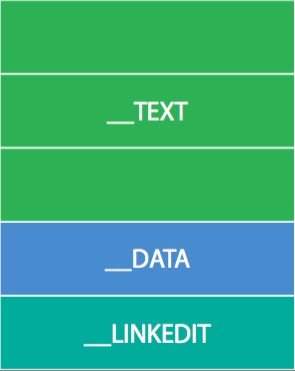
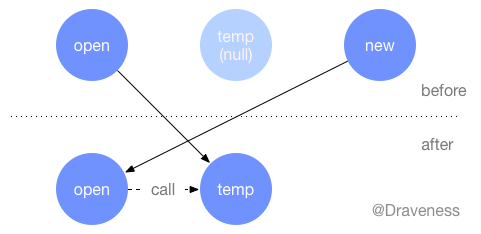
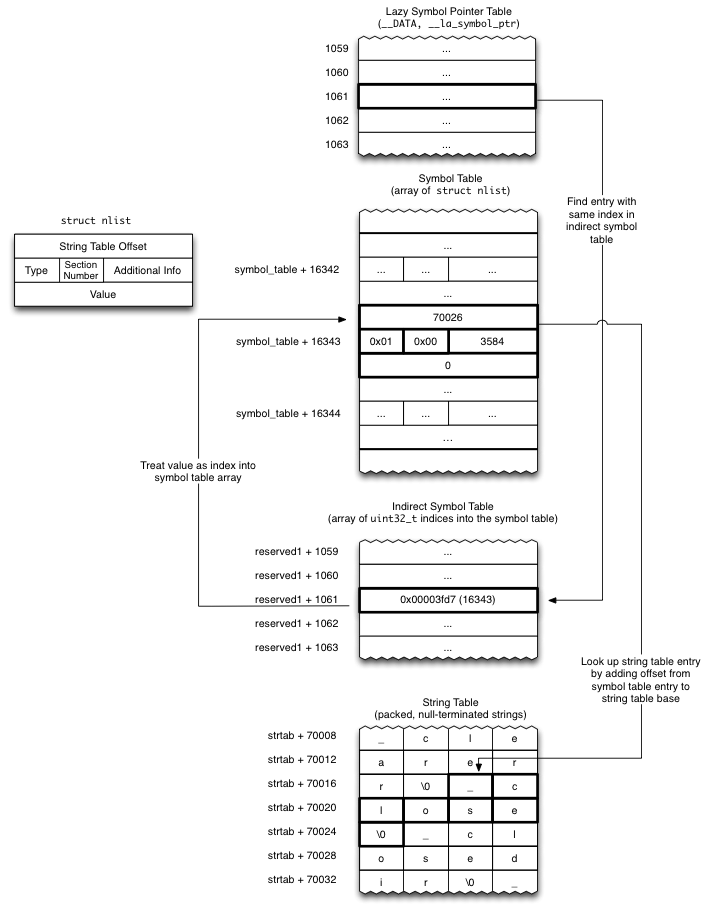
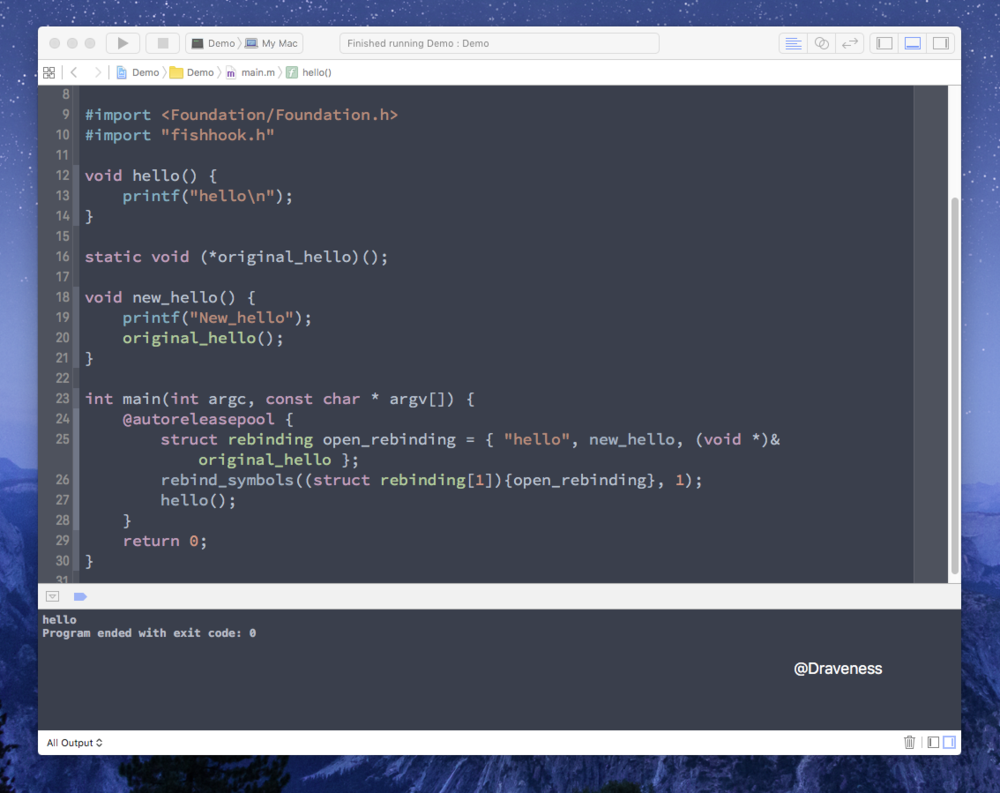
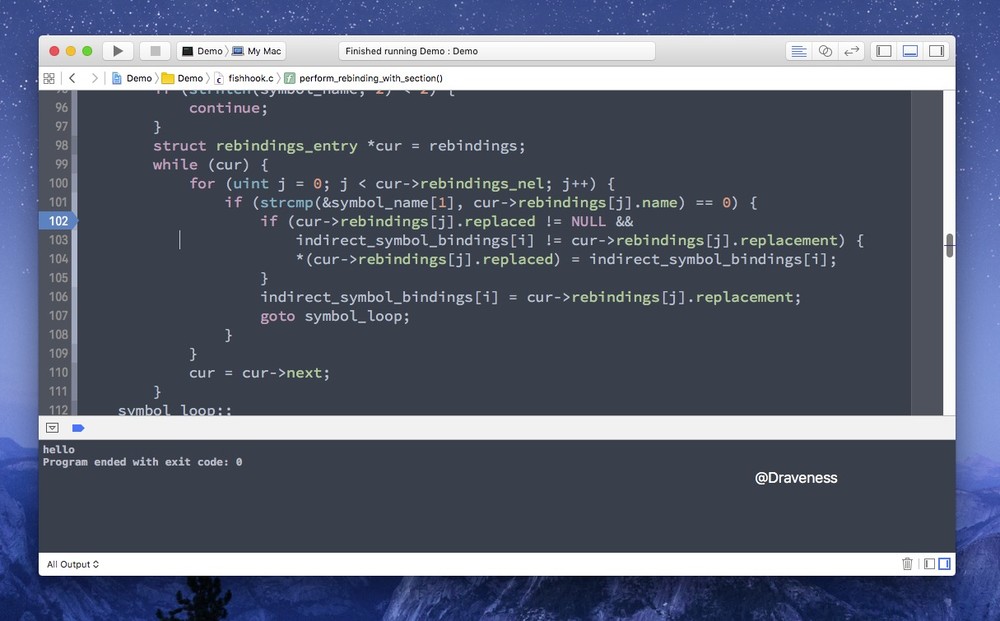











评论